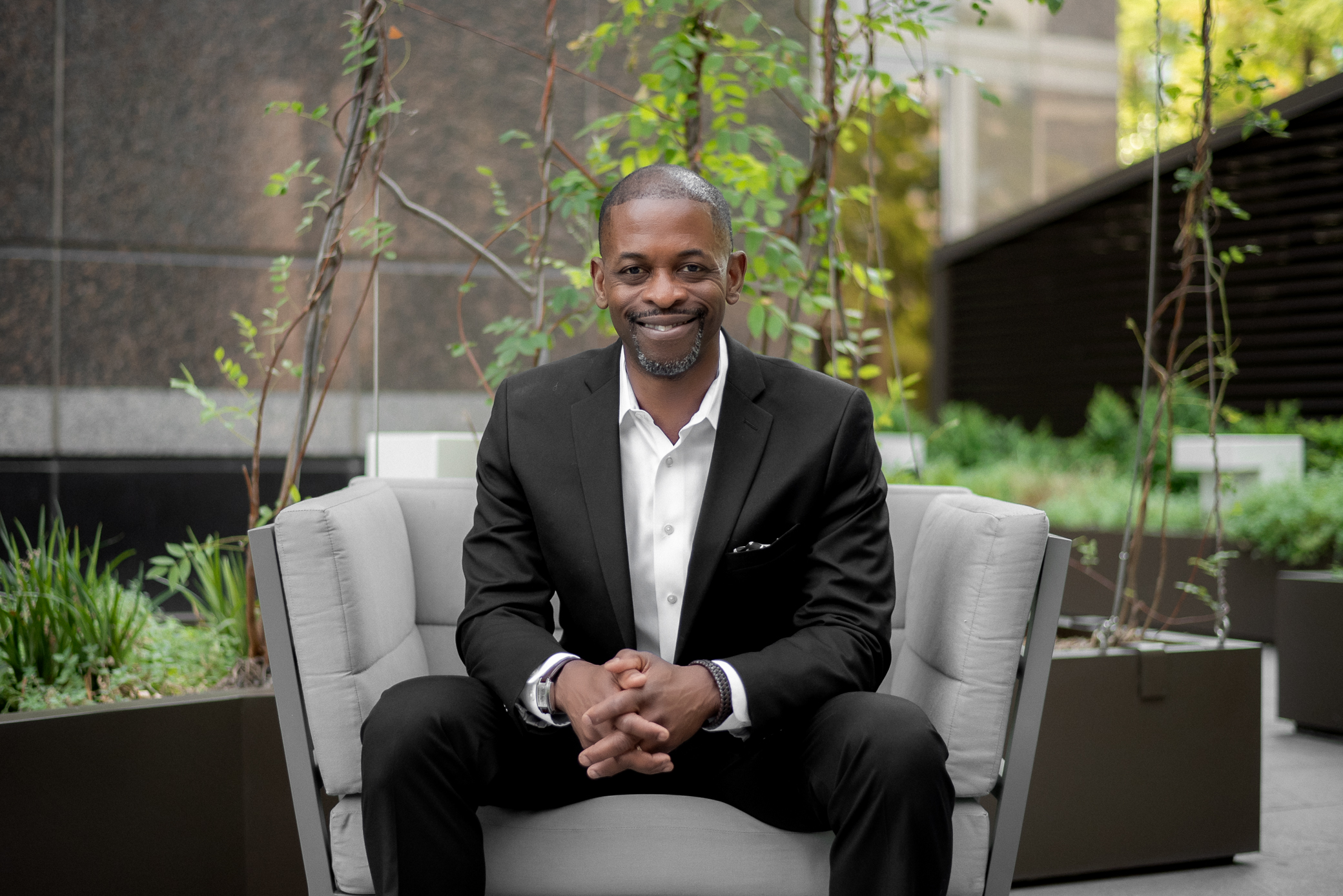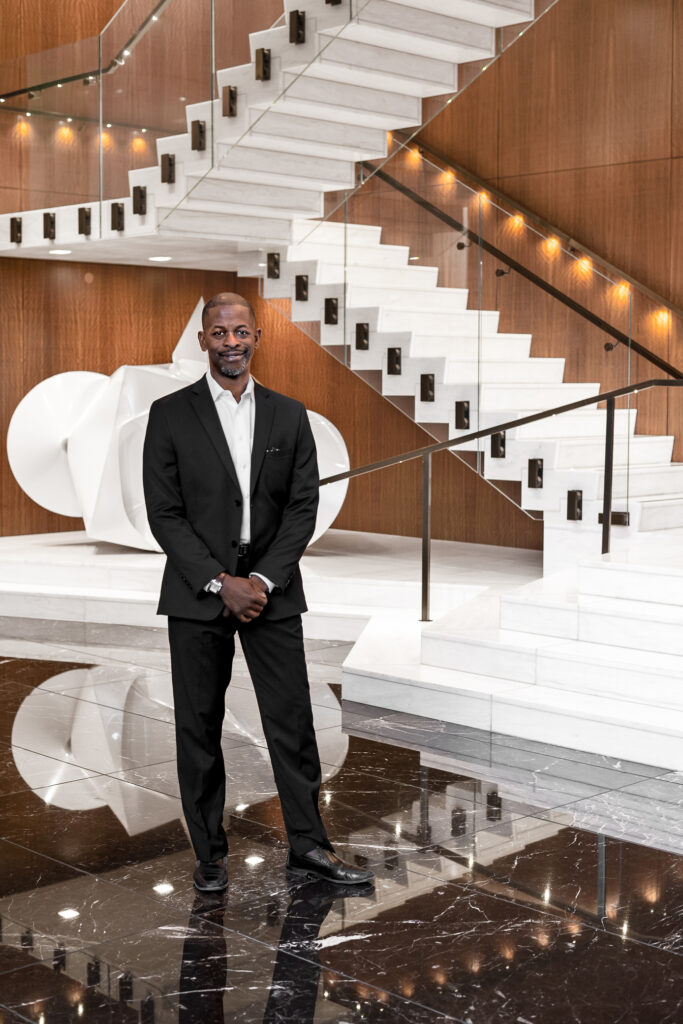Ben Crawford, AIA
 Photo by Conleigh Bauer
Photo by Conleigh Bauer
KATE AOKI: When did you know you wanted to be an architect?
BEN CRAWFORD: I didn’t know any architects growing up, but I liked the idea of being around buildings. I drew and sketched a bit, but I wasn’t artistic enough to be an artist. I loved math and numbers, but I wasn’t mathematically inclined enough to be a mathematician or to go into research. I was looking for something that blended my creative impulses with precision. And I liked making things. I loved LEGOs. In high school, they gave me a list of potential careers and sure enough, architect was one of them.
When I was accepted to Rice University, I had a choice to make. Am I going to try this architecture thing or do something else? Rice made it very attractive financially. My family is from modest means. My parents had long careers, my mom with the State of Georgia in social services and public health and my dad with the Atlanta Board of Education in facilities. Both my parents encouraged me to go for it.
I was one of few students of color. None of the faculty looked like me. There wasn’t much in the composition of the profession that matched my background and it took me a while to find my footing. My junior year, I got some encouragement from a professor who told me it doesn’t matter if you can see yourself now, there’s always room for one more voice. It’s about what you have to say. What you are interested in pursuing. There will always be room for creativity in the profession. That gave me the push I needed to commit to learning as much about architecture as I could, keeping the mindset that there’s room for me. Removing the mental barrier around becoming an architect changed everything for me.
I started to feel like an architect after I started at I. M. Pei. I worked with practitioners who were practicing at a high level, but with an ethos and a point of view.
KATE AOKI: Was that an imitative apprenticeship where you were learning by following what others were doing? Or did you have an active mentor?
BEN CRAWFORD: I was part of a preceptorship program, spending a year and a half practicing in an office as a real employee. One of the principals, Kellogg Wong, helped guide my integration into the studio. He gave me notes about what to think about when approaching problems. He gave me encouragement. The simplest yet most profound advice he gave me was to draw what you want. It’s a deceptively simple thing. What do you want this to be? Draw that. If you can get the vision part, you can fill in the rest. What do you envision, and then how close can you get to that vision? How far can you push it? That is part of why I leaned in towards design.

KATE AOKI: With a new generation in the workforce that prioritizes work/life balance, how do you reconcile this cultural change which is so antithetical to the way the previous generations of architects were expected to work?
BEN CRAWFORD: I try to be very mindful that I did not have the best work life balance. I put extra pressure on myself because of my position and uniqueness that I couldn’t fail. I would do extra to make sure that I was perceived as doing better than my peers. Being one of the few people of color in most of the firms I worked in, I couldn’t do just enough, I had to do more. It was important for me to be visible in that way because I wanted a chance to hold the pencil.
Now as I work with younger people, I try to be mindful that the way I did it may not be the healthiest thing. It worked out for me – I’m happy and blessed to have a great family – but there are moments when it was a struggle. After my family went to sleep at 10:00pm, I would work until 2:00am because that was the drive I had, but I don’t wish that on everybody else.
Having other interests, experience, and diversions will inevitably enrich you as a person and allow you to be more present and creative when we are working together. I admire young people willing to pursue that outside passion and creativity, creating a better, more whole person that they can bring to the studio.
The tricky part is we now have a limited amount of time together. It was common to stay until eight o’clock, have dinner, talk for an hour, and then work until midnight. That’s where much of the networking and mentorship happened. Now, we have to figure out how to do all that within the bounds of 8am to 6pm. It’s a change in the way we practice.
KATE AOKI: What other ways have you seen the profession change?
BEN CRAWFORD: A couple of years ago, programs like DALL·E and ChatGPT appeared that allow visual representations based on keywords. Now, all you’re hearing about is how artificial intelligence (AI) is taking over the universe. I couldn’t imagine being twenty-two, coming out of school, and somebody throwing this tool at you and saying, good luck. Nobody knows where it’s gonna go, and it’s hard to get a pulse because it’s changing so quickly. But like any tool, it’s just a matter of how you use it. It shouldn’t ever replace creative thinking. It shouldn’t ever replace that internal spark. But can it augment it? Sure.
I’m probably a little too set in my ways to fully integrate it into my process, but everybody has tools for their time. For these young people, it will be interesting to see which ones they choose to use and which ones they choose not to use. These young people live in a world of dynamic fluidity, and it makes them incredibly flexible thinkers. If you can harness that flexibility with some experience, let’s see where they take it.
KATE AOKI: You’ve lived in a few places other than Dallas. What have you noticed about Dallas architecture or design philosophy that sets it apart from other cities?
BEN CRAWFORD: Coming here nine years ago from Houston, it was striking how the network of well-established firms, with well-established principals and deep community roots, informs the ability to get work. It’s more challenging to be in a place where developers say, “Ben, I like you, but I’ve been working with this person for 20 years and they have been great.” I appreciate that. I respect it.
KATE AOKI: This is a city of networking, and much of that seems to happen through professional organizations.
BEN CRAWFORD: Yes, that’s the secret. Pick a meaningful group and really embed yourself. I think in Dallas it helps to be around of enough to become like that favorite piece of furniture. You have to let people get comfortable with you. Once you contribute and you are recognized for those contributions, the city opens itself up. That’s been a great thing to experience.

KATE AOKI: What do you do for fun or to relax? It can’t be architecture related.
BEN CRAWFORD: I’m a basketball nut. I still play. I’m the old man that goes out there on Saturday, and I love it. I promised myself that I will play until I blow an achilles or twist a knee. Thankfully, that hasn’t happened yet.
(Interview conducted August 2023. Edited for brevity and clarity.)